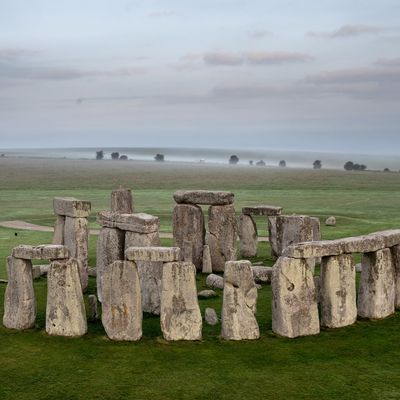
Let me start by saying that I think Stonehenge is rad, and I have nothing but respect for the scholars and archaeologists who study it. It’s so cool how the stones are aligned with the setting of the sun every winter solstice and the rising of the sun every summer solstice. It’s intriguing how no one knows exactly how it was built and that prehistoric communities probably did rituals there. I even think it’s cool that so many people think it was built by aliens, because even though I doubt it, what do I know, you know?
In short, I find Stonehenge quite interesting, so I was thrilled when I saw headlines about it today. “A Stonehenge mystery has finally been solved,” said Reuters. “Stonehenge: Sarsen stones origin mystery solved,” cried the BBC. “Whence Came Stonehenge’s Stones? Now We Know,” teased the New York Times.
“Hell yes,” I said to myself out loud in my empty apartment as I smashed on the links so hard my trackpad cracked and my walls shook. Give me the big rock news. Did they come from space? From deep beneath the sea and no one’s sure how they got out? Are they magic? Did Merlin have something to do with it? Tell me, I’m ready!!!
The findings, which were published in the journal Science Advances this week, concerned the massive sarsen stones that make up part of Stonehenge and weigh on average 20 tons. While geologists concluded nearly a century ago that the site’s smaller bluestones had been brought to the area from the Preseli Hills in western Wales, about 180 miles away, the origins of the sarsen stones had remained, until now, a mystery. Oh man, you’re probably thinking. The suspense is building. Here we go, here’s the big reveal. I can’t wait to find out where these big-ass rocks came from, I bet it’s somewhere really surprising, since it took so long to figure out. Well, manage your expectations, is all I’ll say.
The scientific breakthrough came last year, when a missing piece of a sarsen core that had been removed during an excavation in 1958 was returned to scientists. Because researchers are discouraged from drilling into the ancient sarsens, they had been limited in what tests they could conduct. But the new, missing piece of core allowed scientists to chemically analyze a piece of stone that hadn’t been affected by surface weathering. They compared the data from the core with that of 20 known locations of sarsen across England and found that the sarsen at Stonehenge came from — okay, wait for it … here we go:
Fifteen miles away, in West Woods, just south of Marlborough.
Now, I mean no disrespect at all to the team who worked tirelessly on making this discovery, but I suspect if you asked a random assortment of people on the street where they realistically thought the big rocks at Stonehenge came from, at least a handful would probably answer: “I don’t know … probably somewhere roughly 15 miles away.”
Still, it’s nice to know for sure, I guess. And as Mike Pitts, editor of the magazine British Archaeology, told the Times, this discovery is important, because knowing where the stones came from will help us learn how and when they were moved. Dating them matters, he said, “because then we can say what else was present in the landscape at the same time, what was old or gone and what was still to come — other sites are better dated — and of course who actually built the thing.”
Okay! So, like, this news isn’t quite as big as I was expecting, but it’s here, and it gets the job done, and for that I’m happy and grateful.


